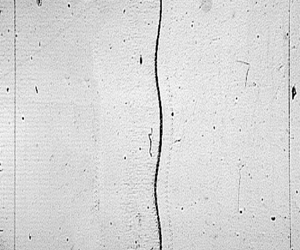Article contents
Experimental study on a light–heavy interface evolution induced by two successive shock waves
Published online by Cambridge University Press: 06 December 2022
Abstract

Richtmyer–Meshkov instability induced by two successive shock waves is experimentally studied in a specific shock tube. To create two successive shock waves synchronously, a driver section is added between the driver and driven sections of the standard shock tube, and an electronically controlled membrane rupture equipment is adopted. The shock-tube flow after the membranes rupture is well described by combining the shock relations, isentropic wave relations with compatibility relations across the contact surface (region). The new shock tube is capable of generating two successive shock waves with controllable strengths and time interval, and provides a relatively ‘clean’ wave system. Then the developments of single-mode light–heavy interfaces with different initial conditions induced by two successive shock waves are investigated. The initial amplitudes are all small enough such that the first-shocked interface is within the linear growth regime at the arrival of the second shock. The results show that if the pre-second-shock perturbation amplitude is small, the linear, nonlinear and modal evolutions of the double-shocked interface can be reasonably predicted by the existing models proposed for predicting the perturbation growth induced by a single shock. For the double-shocked interface, the second shock provides an additional perturbation velocity field to the original one introduced by the first shock impact. The validity of the linear superposition model indicates that the linear superposition of these two perturbation velocity fields is satisfied. Therefore, a double-shocked interface evolves similarly to a single-shocked interface provided that their postshock amplitudes and linear growth rates are the same.
JFM classification
- Type
- JFM Papers
- Information
- Copyright
- © The Author(s), 2022. Published by Cambridge University Press
References
REFERENCES
- 2
- Cited by





